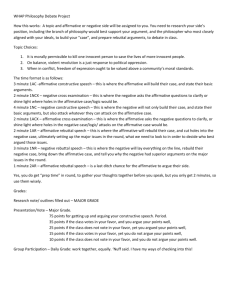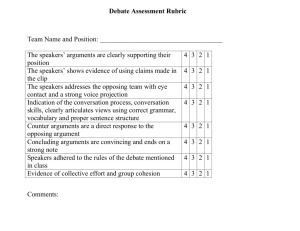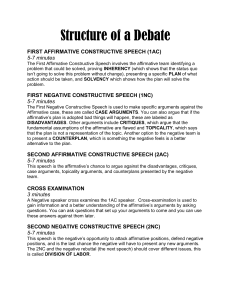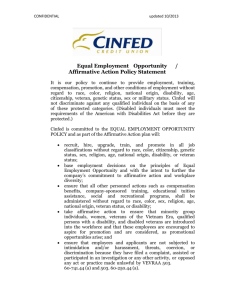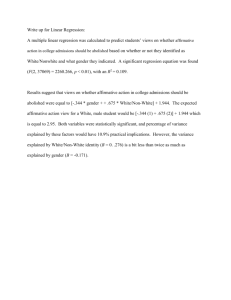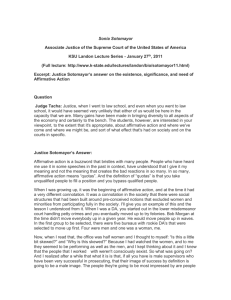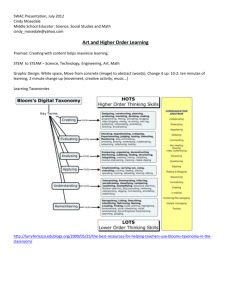Debating Guide
advertisement
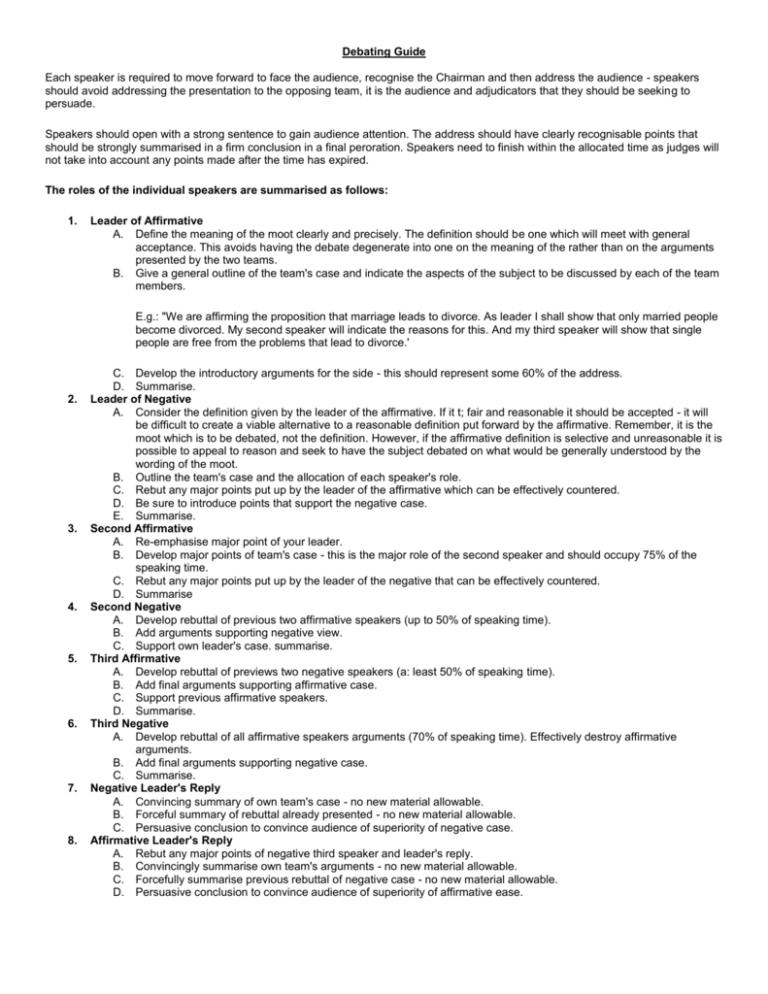
Debating Guide Each speaker is required to move forward to face the audience, recognise the Chairman and then address the audience - speakers should avoid addressing the presentation to the opposing team, it is the audience and adjudicators that they should be seeking to persuade. Speakers should open with a strong sentence to gain audience attention. The address should have clearly recognisable points that should be strongly summarised in a firm conclusion in a final peroration. Speakers need to finish within the allocated time as judges will not take into account any points made after the time has expired. The roles of the individual speakers are summarised as follows: 1. Leader of Affirmative A. Define the meaning of the moot clearly and precisely. The definition should be one which will meet with general acceptance. This avoids having the debate degenerate into one on the meaning of the rather than on the arguments presented by the two teams. B. Give a general outline of the team's case and indicate the aspects of the subject to be discussed by each of the team members. E.g.: "We are affirming the proposition that marriage leads to divorce. As leader I shall show that only married people become divorced. My second speaker will indicate the reasons for this. And my third speaker will show that single people are free from the problems that lead to divorce.' 2. 3. 4. 5. 6. 7. 8. C. Develop the introductory arguments for the side - this should represent some 60% of the address. D. Summarise. Leader of Negative A. Consider the definition given by the leader of the affirmative. If it t; fair and reasonable it should be accepted - it will be difficult to create a viable alternative to a reasonable definition put forward by the affirmative. Remember, it is the moot which is to be debated, not the definition. However, if the affirmative definition is selective and unreasonable it is possible to appeal to reason and seek to have the subject debated on what would be generally understood by the wording of the moot. B. Outline the team's case and the allocation of each speaker's role. C. Rebut any major points put up by the leader of the affirmative which can be effectively countered. D. Be sure to introduce points that support the negative case. E. Summarise. Second Affirmative A. Re-emphasise major point of your leader. B. Develop major points of team's case - this is the major role of the second speaker and should occupy 75% of the speaking time. C. Rebut any major points put up by the leader of the negative that can be effectively countered. D. Summarise Second Negative A. Develop rebuttal of previous two affirmative speakers (up to 50% of speaking time). B. Add arguments supporting negative view. C. Support own leader's case. summarise. Third Affirmative A. Develop rebuttal of previews two negative speakers (a: least 50% of speaking time). B. Add final arguments supporting affirmative case. C. Support previous affirmative speakers. D. Summarise. Third Negative A. Develop rebuttal of all affirmative speakers arguments (70% of speaking time). Effectively destroy affirmative arguments. B. Add final arguments supporting negative case. C. Summarise. Negative Leader's Reply A. Convincing summary of own team's case - no new material allowable. B. Forceful summary of rebuttal already presented - no new material allowable. C. Persuasive conclusion to convince audience of superiority of negative case. Affirmative Leader's Reply A. Rebut any major points of negative third speaker and leader's reply. B. Convincingly summarise own team's arguments - no new material allowable. C. Forcefully summarise previous rebuttal of negative case - no new material allowable. D. Persuasive conclusion to convince audience of superiority of affirmative ease.
